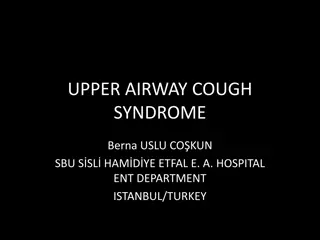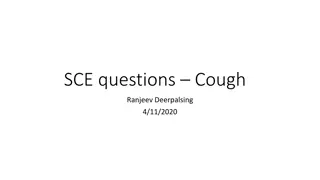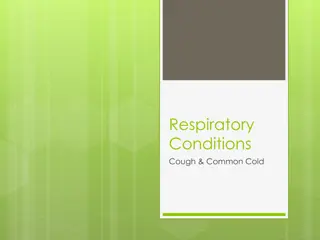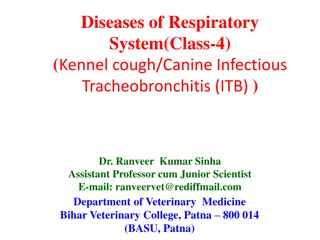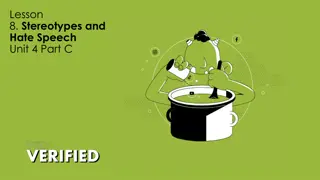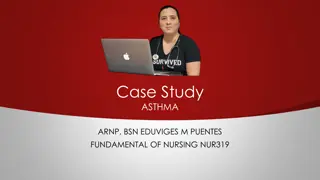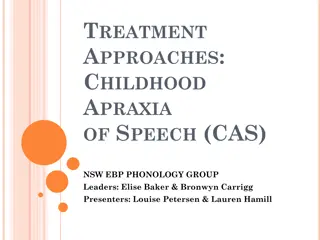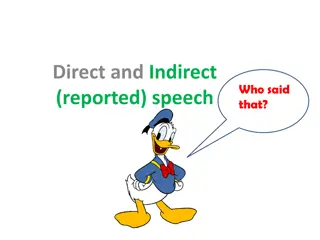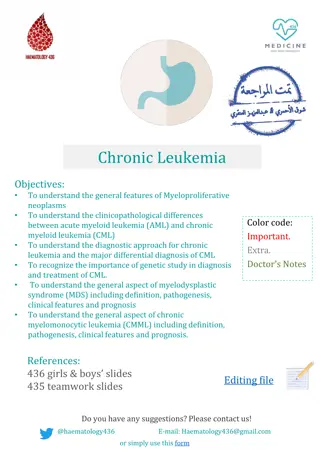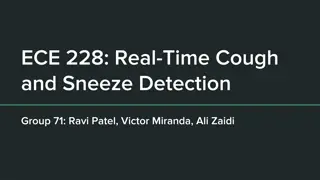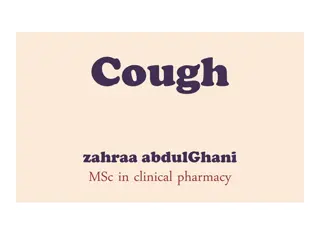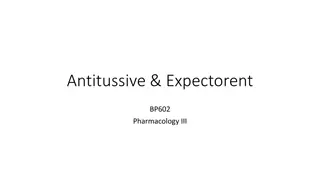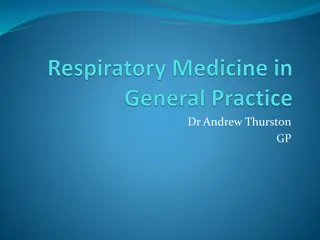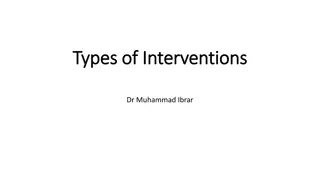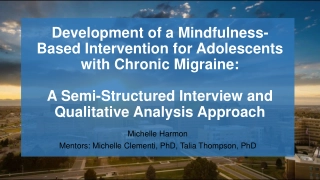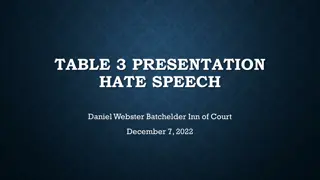Speech Therapy Intervention in Chronic Cough: Current Approaches and Diagnosis
Explore the evolving treatment approaches for chronic cough including muscle tension-based interventions, laryngoscopy assessments, and referral pathways to specialist clinics. Learn about the causes, signs, and patient experiences associated with chronic cough, as well as the diagnostic process involving clinical assessments and questionnaires. Discover the role of speech therapy in addressing underlying factors contributing to chronic cough symptoms. View images and insights from Jennifer Ellis, a Consultant Speech and Language Therapist.
Download Presentation

Please find below an Image/Link to download the presentation.
The content on the website is provided AS IS for your information and personal use only. It may not be sold, licensed, or shared on other websites without obtaining consent from the author. Download presentation by click this link. If you encounter any issues during the download, it is possible that the publisher has removed the file from their server.
E N D
Presentation Transcript
Speech Therapy Intervention in Chronic Cough Jennifer Ellis Consultant Speech and Language Therapist
Treatment for Chronic Cough 5 years ago: Chronic cough Inducible laryngeal obstruction (ILO) Dysphonia Dysphagia (discomfort on swallowing) Globus
Treatment for Chronic cough Current approach: Precipitating event +/- comorbidities irritate larynx. Pervasive state of hypersensitivity and hyper responsiveness Unifying hypothesis that accounts for overlapping maladaptive or exaggerated behaviours
Treatment for Chronic cough Emerging approach: Muscle tension MT dyspnea MT dysphonia MT dysphagia MT Hypersensitivity
Causes of UA MT Skeletal/structural pathology Disease ( eg asthma ) Postural habits Breathing pattern Vocal style Cough (post-viral) Emotion/trauma
Signs of MT Visible Audible Sensory
Patients Report can t breathe throat tightens breathing is noisy short of breath wear mask all the time lose my voice can t run anymore lump in my throat inhalers don t help chest hurts can t use perfume
Referral pathway Specialist Cough clinic Respiratory physicians Respiratory MDT ENT
Diagnosis: Clinical assessment Case History Medical History and referral information Questionnaires (LCQ, LHQ, VHI) Presentation
Laryngoscopy assessment Laryngeal hypersensitivity Breathing pattern changes Inducible laryngeal obstruction Emotional response, including psychogenic voice Structural pathology
Laryngoscopic findings : Inflammation and oedema Hyperfunction of supra glottic musculature Incomplete adduction of vocal cords on phonation Viscous secretions pooling around laryngopharynx Paradoxical vocal cord and vestibular fold movement Fidgity larynx Sympathetic movements of vocal cords during breathing
Therapy: Key Components Reassurance and engagement Explanation/education Upper airway lubrication Eliminating upper body tension and laryngeal strain Acute laryngeal and cough control strategies Psychological
Value of SLT input To the patient Improved QOL return to normality, greater independence Fewer hospital admissions Empowerment- overcoming symptoms previously thought to be insurmountable Experience of being understood
Value of SLT input To our service Cost effective: the average patient completes within 3 sessions Aids clinic throughput faster diagnosis and treatment, less blocking of clinic appointments Identification of pathology fast track to ENT etc To the NHS Cost saving through decreased A& E attendance and admissions and use of unnecessary medication and further diagnostic testing.
Summary Muscle tension and laryngeal hypersensitivity underpin UA dysfunction Accurate diagnosis based on clinical assessment and laryngoscopy Address all laryngeal activity and habituated patterns of behaviour, as well as any relevant psychological drivers MDT approach
Any Questions? Thank you for listening Jenny Ellis Consultant Speech and Language Therapist


